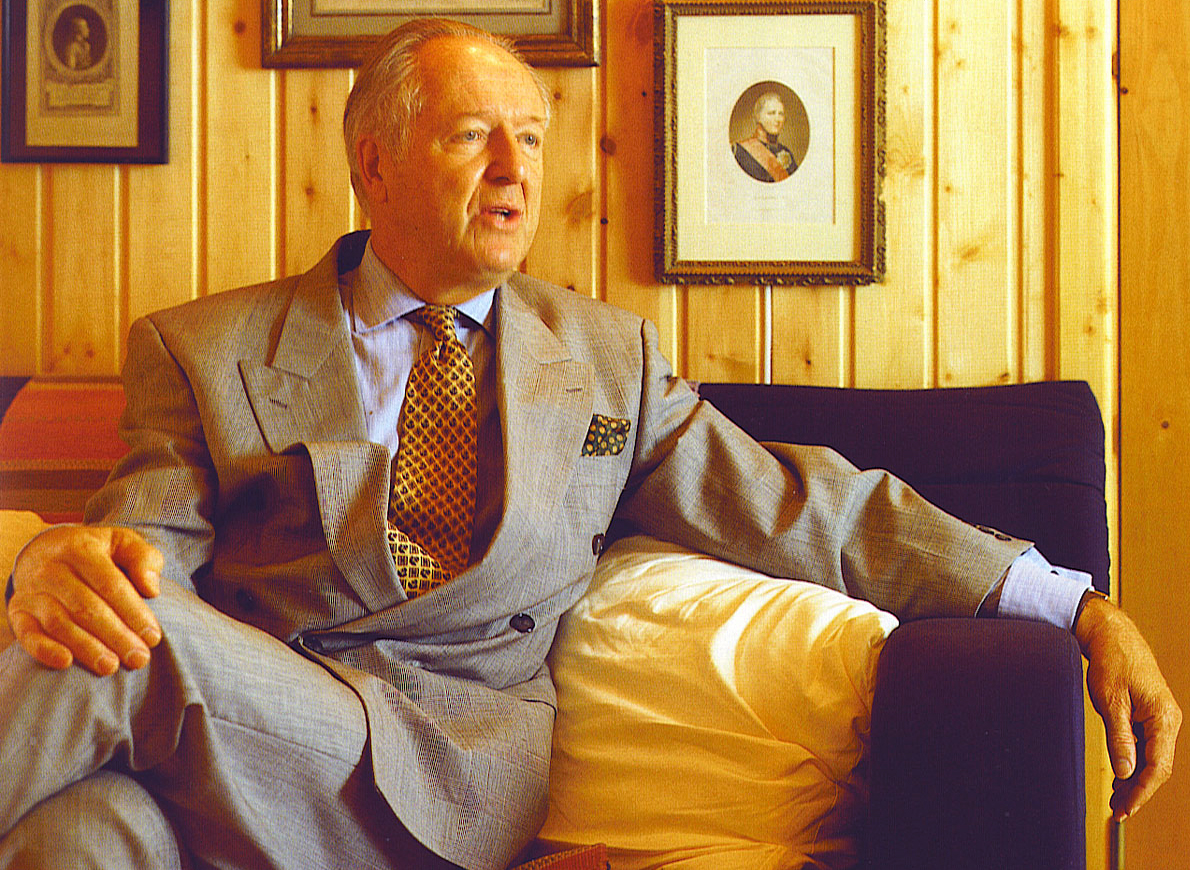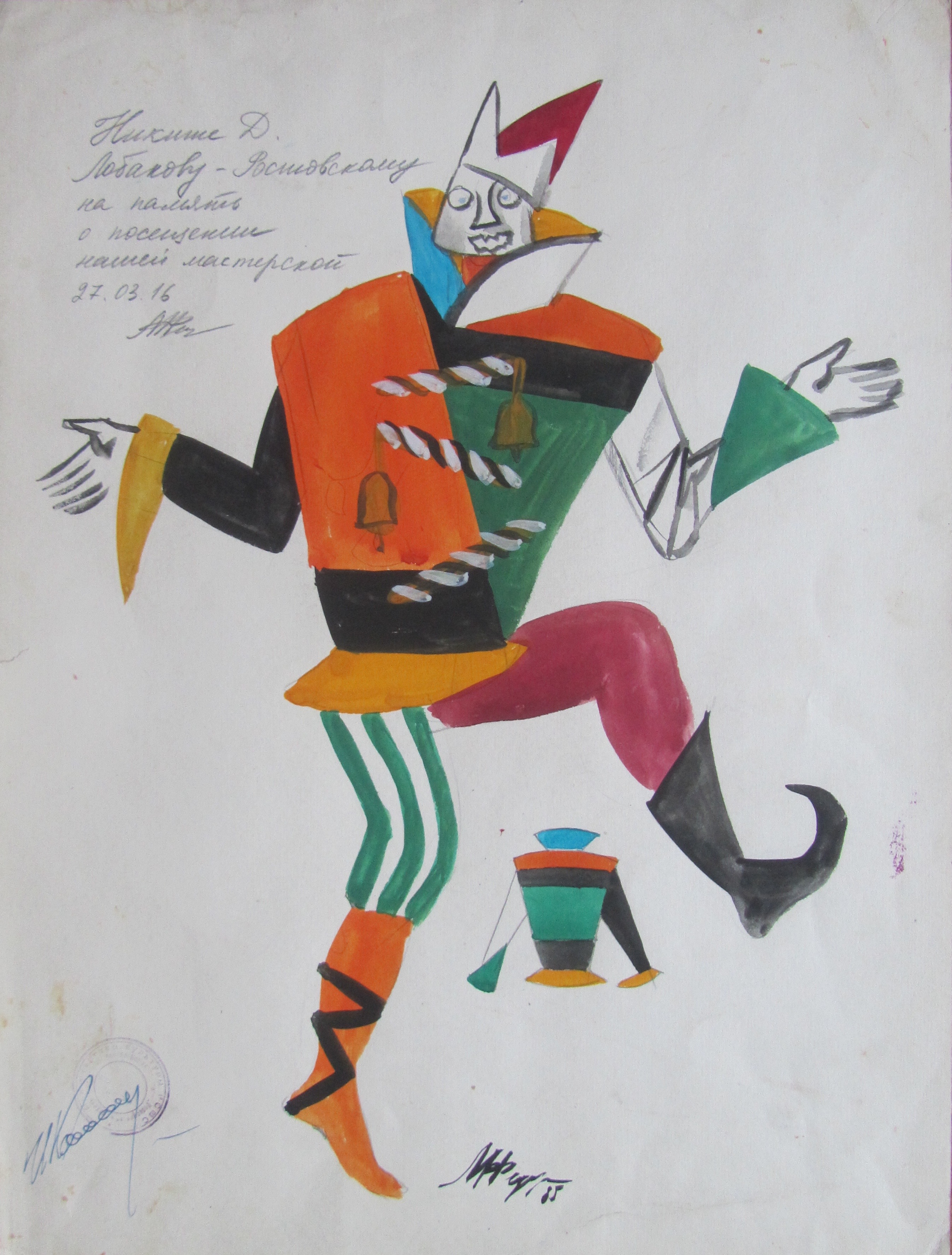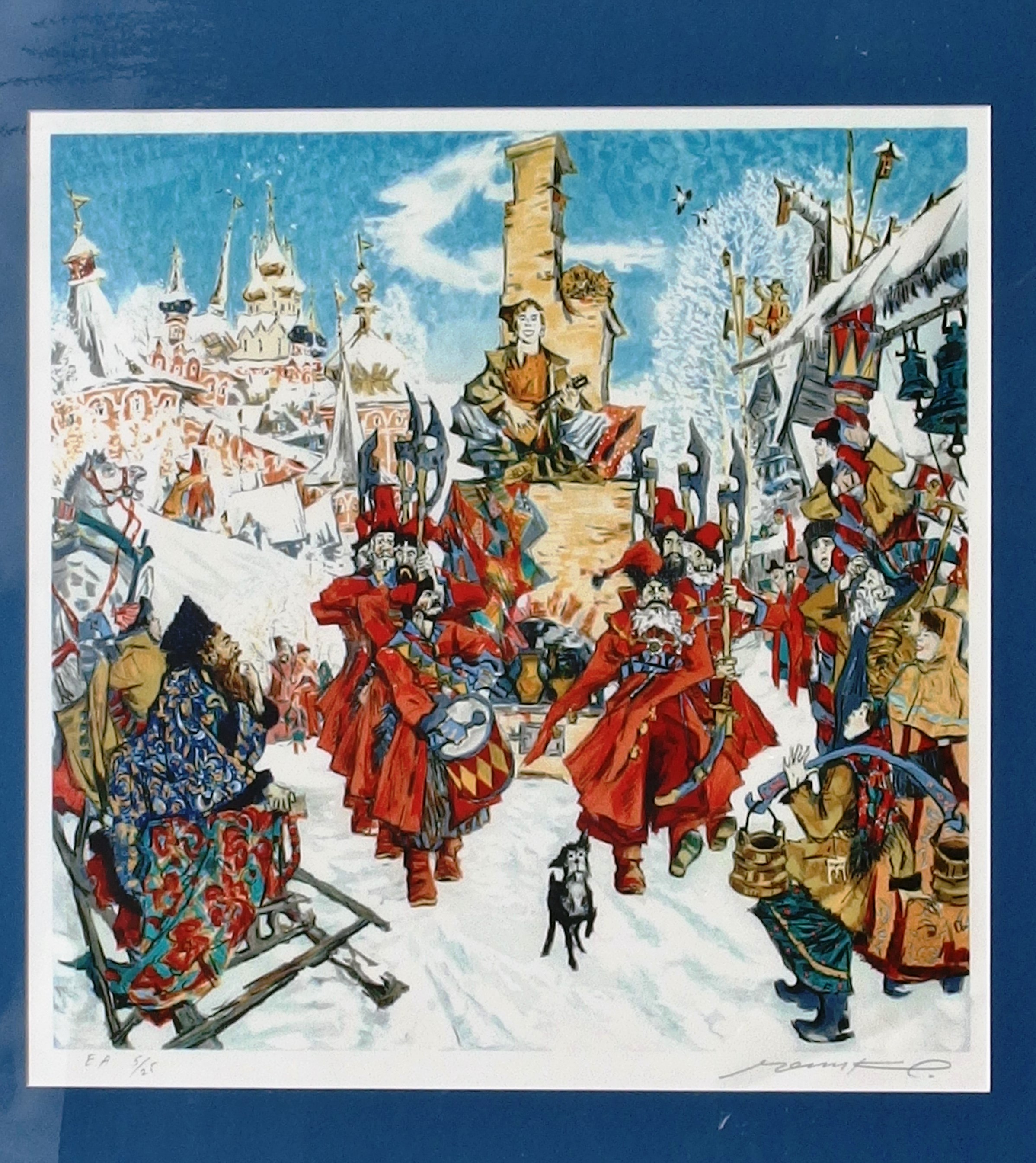Oksana Karnovich
The exhibition ‘The Gift of Prince N.D. Lobanov-Rostovsky. Recent Acquisitions’ opened on October 7 in the state-room of the Red Palace of the Rostov Kremlin.
At various times the magazine, Russian Mind, has written about Prince Nikita Dmitrievich Lobanov-Rostovsky, a member of the Co-ordinating Council of Russian Compatriots in the United Kingdom, whose public and charitable activity is dynamic and diversified.
Donator
The Russian prince is a thirty-third generation ancestor of Rurik, and a descendent of the princes of Rostov. He was born in Sofia and his life has been linked to the United Kingdom for years. In 1958 he received a bachelor degree in geology from Christ Church College in Oxford. His study was made possible by a grant provided by an unknown sponsor. Using his own funds, in commemoration of this, in 2012 the prince established a department of Planetary Geology at the university. And he expressed his gratitude to his teacher, the Professor in Organic Chemistry, Dr Paul Kent, by creating a permanent teaching position in organic chemistry which is named after Dr Paul Kent.
Lobanov-Rostovsky presented an oil portrait of the pioneer of modern geology, Charles Lyell, to the Geology department of the University of Oxford. Due to the fact that Nikita Dmitrievich ‘became infected’ with his passion for geology in the mountains neighbouring the Bulgarian capital, he regularly makes contributions to the National Museum of Natural History at the Bulgarian Academy of Science in Sofia. In 2014 he presented a rock fragment from Mars to it. The object takes pride of place near the entrance to the Museum together with rock fragments from the Moon which were gifted by the USSR and the USA to Bulgaria.
When it comes to museums to which Lobanov-Rostovsky has contributed works of art, it is hard to count how many. Among them are the Metropolitan Museum of Art, the Guggenheim Museum, the Museum of Modern Art (MoMA) in New York, the Legion of Honour Museum in San Francisco, the Pushkin State Museum of Fine Arts in Moscow, the National Art Museum of Ukraine in Kyiv, the Museum of Theatrical and Musical Art in St. Petersburg…
And for the last five years Nikita Dmitrievich has cooperated with the State Museum Preserve: Rostov Kremlin. He wishes to establish a Museum of Princes of the Lobanov-Rostovsky Family in his ancestral homeland. This idea was not adopted straight away but it is now fully supported by both the Rostov Museum and the Ministry of Culture of the Russian Federation.
Background
In October 2011, Lobanov-Rostovsky proposed to the Rostov Museum that equipment and objects from the private Lobanov-Rostovsky Museum which had been located in Filevsky Park, Moscow, until it was closed by the local government, could be accepted into their collections as a gift from him.
In March 2013 objects totalling more than 600,000 euros were transported from the Lobanov-Rostovsky Museum to Rostov. Later Nikita Dmitrievich regularly contributed to the Rostov Museum. At the moment nearly 1,300 pieces from the XVII-XXI century have already been registered, and over 14,000 additional items are still being processed.
Prints and gravures of Russian and Western artists from the XVIII century and from the first half of the XIX century (portraits of the Russian Tsars, sights of Moscow and St. Petersburg) which were predominantly purchased by the donator in Paris, as well as old maps of Russia and Europe, are of the utmost interest.
A collection of posters which announce exhibitions of Russian artists of the late XIX century and the early XX century, which were printed in different countries during the last four decades, is notable for its comprehensiveness.
Archives of the Lobanov-Rostovsky, Vyrubov and other families, which reflect the lives of Russian émigrés in France, Bulgaria, Germany and the USA, should also be noted. A part of the collection is devoted to the life experience of the donator himself as a descendant of the nobility of Rostov, and also to his comprehensive public work and his collecting and exhibiting activities.
Nikita Dmitrievich contributed his honours to the Rostov Museum: from his sport medals won at junior events to the Russian, Ludvig Nobel, Gold Medal which was presented to him on March 30, 2013.
The department of Decorative and Applied Arts of the Rostov Museum is famous for its rich and diverse collection of: English Delftware and Chinese porcelain: old silverware and tinted glass: inlaid mother-of pearl jewellery boxes: Indian fabrics and pieces of Russian hand-weaving: numerous objects (both old and modern) made of stone, wood and metal, as well as ethnographic souvenirs which were purchased by Lobanov-Rostovsky in different countries.
In addition, the Museum has received a unique library consisting of more than 1,000 books, most of which are autographed.
Lobanov-Rostovsky’s gifts of paintings, water colors and drawings of artists of the XX century are of special interest. The Rostov Museum has received art works by such famous masters as Nikolai Benois, Dmitri Bouchène and Lev Kropivnitsky.
In 2013, during the opening of the first exhibition of his gifts in Rostov, Nikita Dmitrievich presented two art works by the ‘amazon of the avant-garde’, Aleksandra Aleksandrovna Ekster, to the Museum. They are costume designs for Alexander Tairov’s production of the play, Famira Kifared, by Innokentyi Annensky which was shown at the Maly Theatre, Moscow. A ‘Bacchanal drama’ which premiered in 1916, it became famous mostly for its stagecraft. Actors moved on a raked stage and platforms between cubes and pyramids, and their grease-paint not only sculptured facial gesture but also emphasized the actor’s extremities and the musculature of their bodies. These methods of, so called, ‘epidermal art’ are well shown in the sketches which are now kept in the Rostov Museum. Nikita Dmitrievich purchased them in 1969 in New York from Simon Lissim, a student of Ekster.
The art of the early XXI century is represented by several art works of Zhenya Shef who lives in Germany, and also a small but representative and diverse collection of art works by Vladimir Nemukhin who is rated as one of the most expensive Russian artists. Now, thanks to the gift made by Lobanov-Rostovsky, the Museum owns nine pieces by this recognised master which characterise the mature period of Nemukhin’s creative work in the field of painting, graphics, sculpture and decorative and applied arts.
New Donations to the Rostov Museum
This year Lobanov-Rostovsky presented a portrait of his first wife Nina to the Rostov Museum. The portrait was painted in 2003 by a Professor of the Repin St. Petersburg State Academy Institute of Painting, Sculpture and Architecture L.S. Davidenkova. Lidia Sergeevna is an outstanding portraitist who painted the composer, Mikael Tariverdiev: the writer, Veniamin Kaverin: the stage director Grigorii Tovstonogov: the actor and stage director, Oleg Efremov: and other famous cultural figures. The portrait of Nina Lobanova-Rostovskaya is in this spectrum.
Nikita Dmitrievich is an expert and an admirer of Russian theatre and continues to monitor the best pieces of art which appear on the market with a view to purchasing them and sending them to Rostov. Thus, already in this year alone, in an auction in London, for three thousand seven hundred and fifty euros, Lobanov-Rostovsky acquired a drawing for the sets of Meyerhold’s 1921 production of Mayakovsky’s play, Mystery Bouffe: which was made by the sculpture, graphic artist and author of utopian architectural projects, Anton Mikhailovich Lavinsky. It represents a classical example of constructivism on the Russian stage.
Nikita Dmitrievich also has an interest in the works of modern Russian stage designers. At the moment he is in negotiation with the honoured artist of Russia, a Corresponding Member of the Russian Academy of Arts, Maria Vladislavovna Fyodorova. She is famous for her concert costumes created for the ensemble, Russkaya pesnya, which is managed by the People’s Artist of Russia, Nadezhda Babkina, with whom she has been cooperating for the last 30 years. Lobanov-Rostovsky selected sketches which were made by her, and they have already arrived in the Rostov Museum.
Another mission of Lobanov-Rostovsky is aimed at the restitution of creative works by Russian artists to Russia. The name of Sergei Chepik who graduated from the Repin Leningrad Institute, and who had lived in Paris since 1988 until his death, is not generally known in Russia. However, Chepik’s popularity in Western Europe is supported by the fact that Pierre Richard commissioned the artist to do his portrait, and that Margaret Thatcher visited Chepik’s studio. Having lived in the very center of Europe, Chepik never stopped thinking of Russia: which is why the majority of the works which he created in Paris are devoted to Russia. One of them, Emelya, had been bought from the artist by Nikita Dmitrievich long ago and has also been gifted to the Rostov Museum.
Sensations
This March, Lobanov-Rostovsky decided to gift three paintings whose worth totals over one million euros to the Rostov Museum.
The painting Abstract composition (1917-1918) by Aleksandra Ekster relates to a period of her creativity which is rated very highly by analysts – from Yakov Tugenkhold and Anatoly Efros (who were contemporaries of Ekster) to Georgy Kovalenko (who is our contemporary). During those years the artist in her art works moved towards pure non-objectivity, creating Colour Rhythms and Colour Dynamics which represent her own variation of abstraction which differs from the suprematism of Kazimir Malevich, the architectonics of Lybov Popova and the ‘colour painting ’ of Olga Rozanova. It was during the shelling of Kyiv and Odessa that Ekster worked on the painting which represents ‘nothing’, and which, in Tugenkhold’s words, personifies ‘a combination of multicoloured geometrical surfaces’, and ‘the agonizing burning of the soul’. Even a viewer who is used to the real world cannot take his eyes off the hot orange and red circles, navy and black deep places, and bright white enamel-like surfaces. It is as if there is ‘another world’, there where pure ideas exist.
This painting had only a few owners. In 1964 Nikita Dmitrievich purchased Abstract Composition which, like the designs for Famira Kifared, had been purchased from Simon Lissim. According to Sotheby’s estimation, its value at the moment is 500,000 euros.
Even though it was painted 10 years after the painting by Aleksandra Ekster, Still Life with Guitar by the legendary founder of cubism, George Braque, is more traditional in terms of its artistic language. Already by the end of the First World War, Braque’s expressive means in painting ceased to have an emphatically rebellious character. He moved to beautiful still lives with fruits and musical instruments in grey and blue, and light green and yellow colours. This still life, which was presented to the Rostov Museum, belongs to this creative period of the artist. Its path is well-monitored: immediately upon creation it was purchased and entered a private collection in Berlin, and it was then stored in Zurich. French experts value the painting at around 220,000 euros.
Nikita Dmitrievich presented the beautiful Still Life with Camellias, Fruits and Wine which was created in 1918 by the outstanding Russian artist Ilya Ivanovich Mashkov to the Rostov Museum. According to an estimation provided by Julian Barran, a former Sotheby’s director, Still Life is worth 300,000 euros.
Exhibition
Almost all the art works which have been gifted during recent years were put on display for the public for the first time in the exhibition: ‘The Gift of Prince N.D. Lobanov-Rostovsky. Recent Acquisitions’ which opened on October 7, 2016 in the state-room of the Red Palace of the State Museum Preserve: Rostov Kremlin.
This is the forth exhibition which presents the gifts of Nikita Dmitrievich to the Rostov Museum Preserve, however, its scale individuates it from previous ones. It is an unprecedented donation in terms of its artistic and historical value, and the total worth of the art works, documents and rare objects is more than one million euros.
Visitors are able to see this opus magnum of Russian and foreign fine arts: the contents of which have never been exhibited in Russia before.
Prince Lobanov-Rostovsky arrived in Rostov from London especially to participate in the opening of this remarkable exhibition.
The exhibition: ‘A Gift of Prince N.D. Lobanov-Rostovsky. Recent Acquisitions’ will be on show until the middle of December.
The Museum House of the Princes of the Lobanov-Rostovsky Family
While collecting gems of Russian and foreign arts from all around the world and presenting them to the Rostov Museum, Nikita Dmitrievich is also hoping that the majority of the gifts will be continuously exhibited in a Museum of the Princes of the Lobanov-Rostovsky Family. The renovation project of the nineteenth century residence located in Rostov has already been approved. The administrative permission for the renovation has also been obtained. The Russian Ministry of Culture allocated around 40 million rubles for the restoration. We wish to believe that nothing will prevent the establishment of the new Museum of the Princes of the Lobanov-Rostovsky Family in Rostov.
















